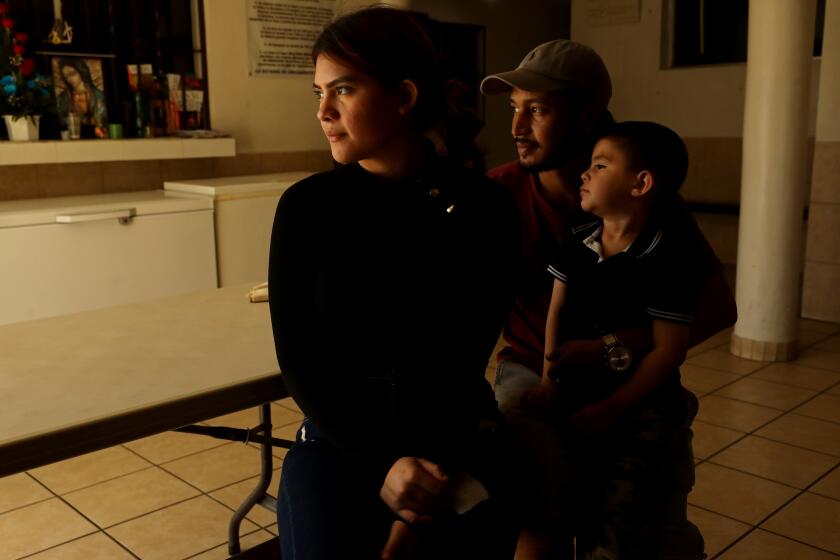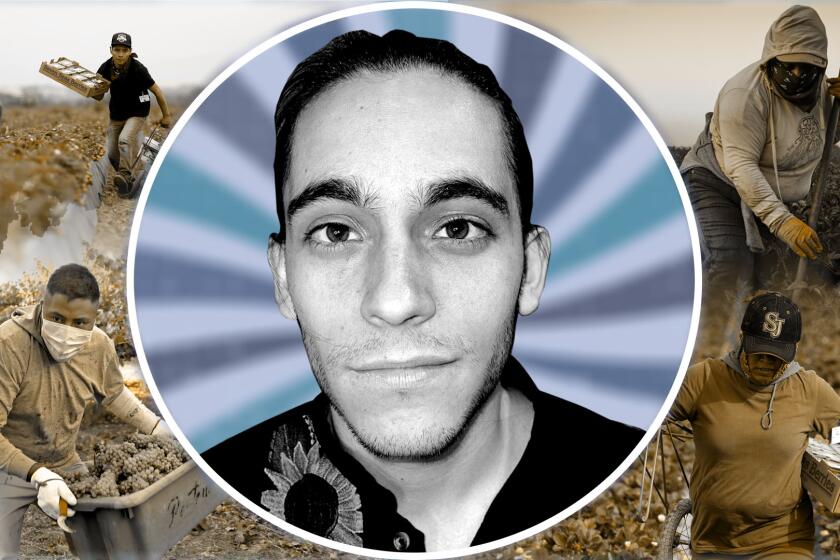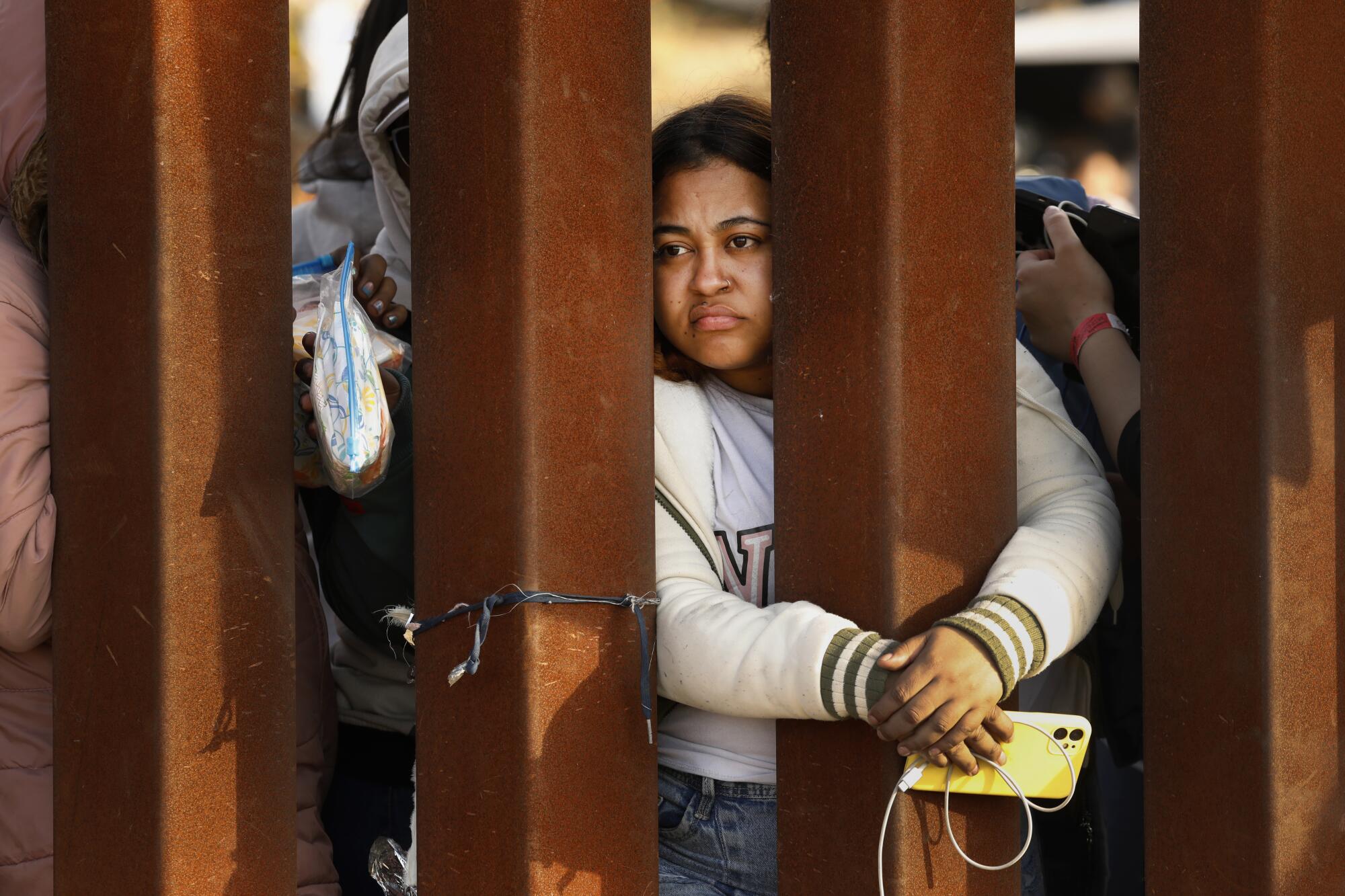
SAN DIEGO — At the migrant camp sprawled along the border wall between Tijuana and San Diego, Diana Rodriguez kept hearing chatter about a confusing TikTok video.
It was Thursday and the 30-year-old, who grew up in a mining village in Colombia, had already been camped out along the towering steel bollards for two days when whispers began to spread about the social media post. It claimed that Title 42, a policy the U.S. government used during the COVID-19 pandemic to quickly expel many migrants without allowing them to apply for asylum, wouldn’t expire until June.
But Rodriguez had done extensive research before leaving her nation’s capital 11 days earlier and knew the policy was supposed to expire that evening. The post, she figured, must be a ploy to scam migrants into paying for legal advice.
Another TikTok video, which has been viewed 17 million times, falsely claimed in big, bold letters that, starting May 11, migrants “cannot be deported.” Soon, thousands of people began to leave poignant comments:
My moment has arrived.
Is this true?
I want to come to meet my mom.
In recent days, as migrants from across the globe camped out in border towns, sleeping outside and fighting hunger and nerves as they waited to be processed by border authorities, they have increasingly turned to TikTok, Facebook, YouTube and other social media sites not just for the comfort of family contact but also for updates on the policy change and how it might affect them.
Their frequent searches and scrolling — complicated by often spotty cell service and a need to preserve their dwindling batteries — underscore how social media and technology have made migration into the U.S. more accessible but also, in ways, more perilous. Influencer accounts have increased the speed of information sharing in languages including Spanish, Chinese and Pashto, while also accelerating the spread of disinformation.
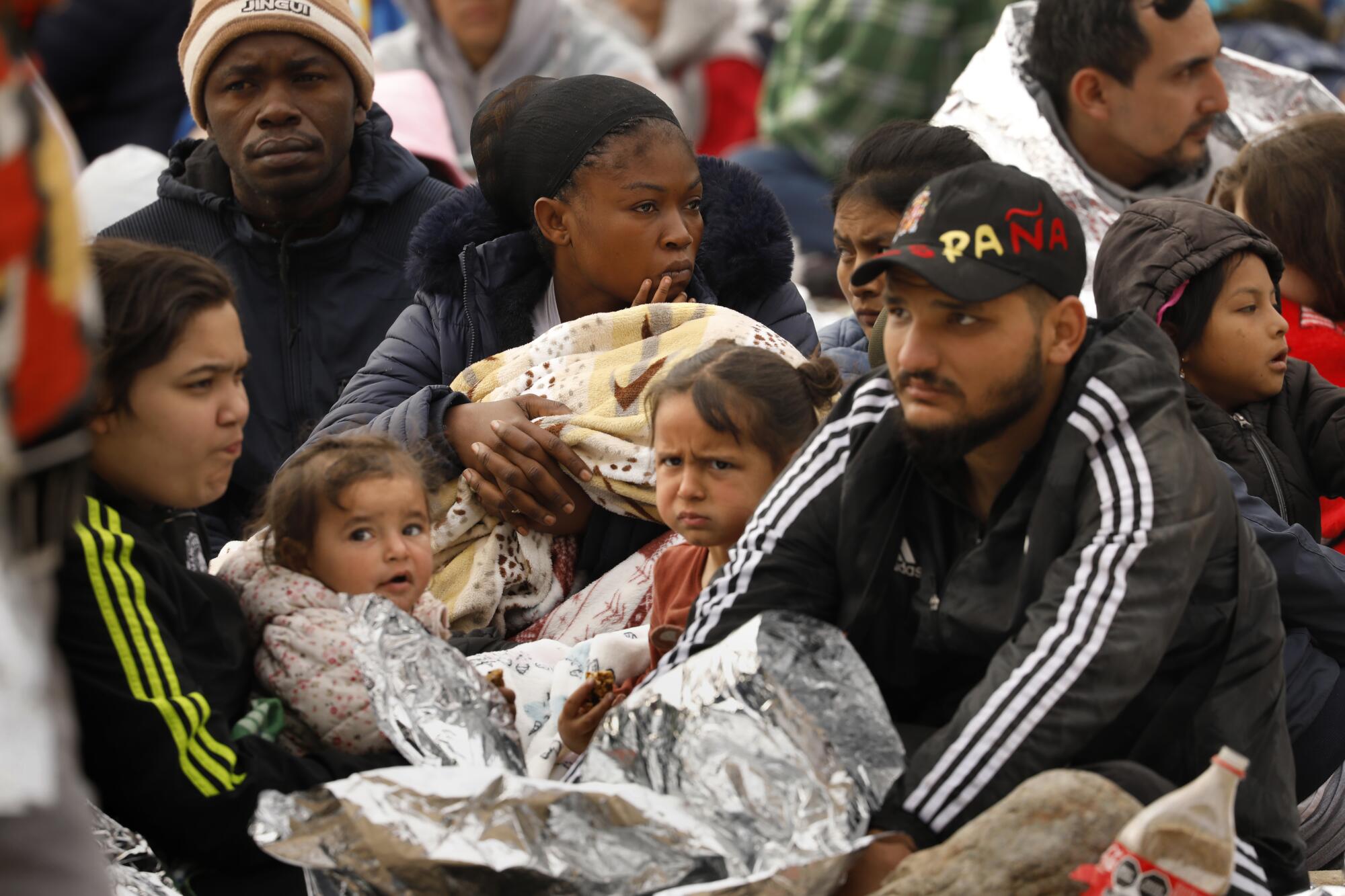
For decades, migrants’ families had to wait for long stretches, sometimes weeks or months, before hearing whether their loved one had made it to the U.S. safely. Now, many migrants travel with external batteries to charge their phones without access to electricity and buy cheap SIM cards so that they can message their families updates on WhatsApp each day. (Rodriguez said she paid roughly $1 for SIM cards at gas stations in El Salvador and Guatemala and about $8 for one in Mexico.)
Before they leave home, migrants often join Facebook groups to research routes and link up with others leaving around the same time, and, at the border, many asylum seekers rely on their phones to secure appointments on CBP One — the notoriously glitchy U.S. Customs and Border Protection mobile app that privacy experts say raises serious concerns about the government’s collection of data.
Title 42’s end is driving frustration and uncertainty among migrants, who must now use mobile app CBP One to seek one of just 1,000 appointments granted daily to seek asylum at the border in the U.S.
Even the work of smugglers has become increasingly automated, said Guadalupe Correa-Cabrera, a professor of policy and government at George Mason University, who researches smuggling networks.
Criminal organizations that traffic people need fewer smugglers — sometimes called coyotes — to move migrants from point to point now, she said, and instead use WhatsApp, which allows them to remain anonymous, to message migrants instructions on where to catch the next leg of their bus journey or to send them GPS coordinates about where to meet.
Technology and social media, Correa-Cabrera said, have also played a role in expanding transcontinental migration into the U.S. via Mexico — today, with the help of Google Translate, people who speak Arabic, Chinese or most any language can communicate in real time with people along the migration route.
“That’s a very important change,” she said.
At the border Friday afternoon, hundreds of migrants were still camped out between two layers of border fencing, along a strip of land that, in recent months, Border Patrol agents have used as an open-air holding cell.
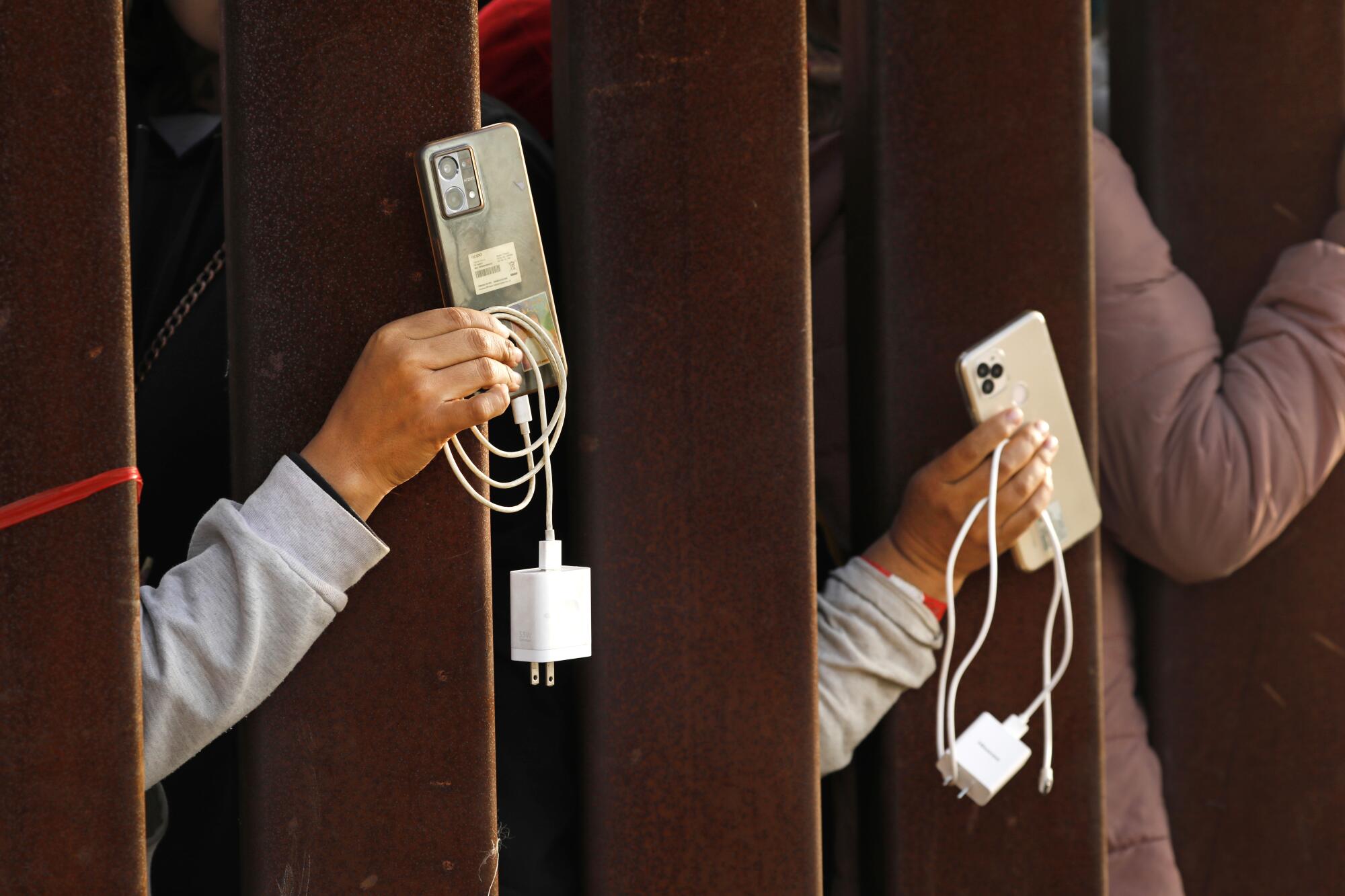
Every few minutes, a migrant’s hand would pop through the slatted fence and dangle a cellphone and coiled charger. A few hundred feet away, Nathan Cervantes, a 41-year-old volunteer from San Diego, had set up a makeshift charging station using upside-down cardboard boxes and a power strip connected to the battery of an idling car.
He and other volunteers labeled migrants’ phones with masking tape and took turns plugging them into the 10-outlet power strip. When he returned their charged phones, Cervantes said, some of the migrants he met — people from Afghanistan, Haiti, Jamaica, Russia and Ukraine — pulled up Google Translate and typed in a message, which the phone read back to him in English.
“Thank you,” they said. “God bless you.”
Cervantes was getting ready to leave for the day, but he couldn’t stop thinking about the look he’d seen in so many of their eyes — a fierce hope, he said, a clinging to the American dream that he worried might ultimately disappoint them.
“We have our own struggles,” he said.
Soon another volunteer arrived with a battery-powered generator, setting up a charging station only a few feet from the wall. Dozens of migrants clustered nearby, pleading for a charge.
“This is their only lifeline,” one volunteer said.
Others handed out bags of Pringles and small plastic dolls for the children. A woman from Vietnam with dirt caked into the wrinkles by her eyes asked for face wipes, and a man pointed down at an oozing blister on his left ankle. A volunteer handed him a small bag of painkillers.
“One every six hours,” he said. “Feel better.”
“Inshallah,” the man responded. If God wills it.
Nearby, Niamat Ullah Arabzada’s three young children chased each other in circles by a makeshift tent fashioned out of pieces of twine and Mylar blankets.
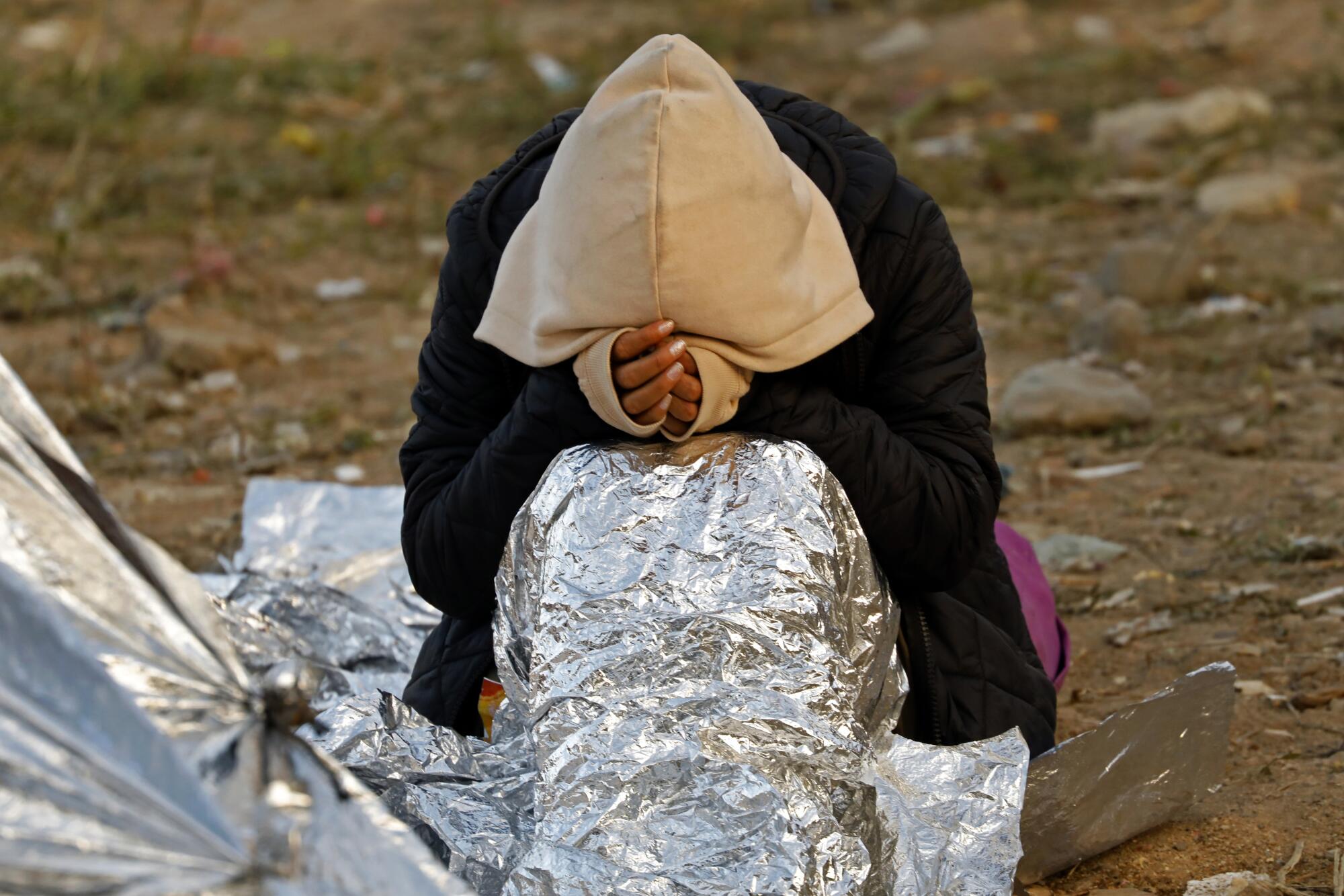
The 26-year-old father, who grew up in Jalalabad, Afghanistan, had deep circles beneath his eyes. His wife, who had recently learned she was pregnant, was resting on a piece of cardboard in the spot where the family had slept for the last two nights, with temperatures dipping into the 50s.
The couple fled Afghanistan after their first child was born five years ago, terrified of the Taliban, which Arabzada said had killed three of his uncles. They moved to Sao Paulo, where he sold clothes at markets and on Instagram, but the money wasn’t steady and their neighborhood wasn’t safe. His wife was growing increasingly depressed.
About 94,000 Afghanistan evacuees have arrived as part of the U.S. effort to resettle vulnerable refugees, including those who worked for the U.S.
They wanted to give their children a more stable life, he said, so in the middle of April, they flew to Costa Rica and then took a series of bus rides and another flight before arriving in Tijuana. They hoped to eventually reunite with his brother in Pennsylvania.
His relatives send him audio messages on WhatsApp every day to check in, and he said he does his best to project a sense of calm. He knows his father, who has a heart condition, would worry too much if he could see the dire situation at the camp.
“I’m good,” he tells his father. “I’m OK, the children are OK.”
Nearby, his young daughter tripped, scraping her chin against the reddish dirt. She wailed and he ran to her, brushing dust from her face and rubbing her back.
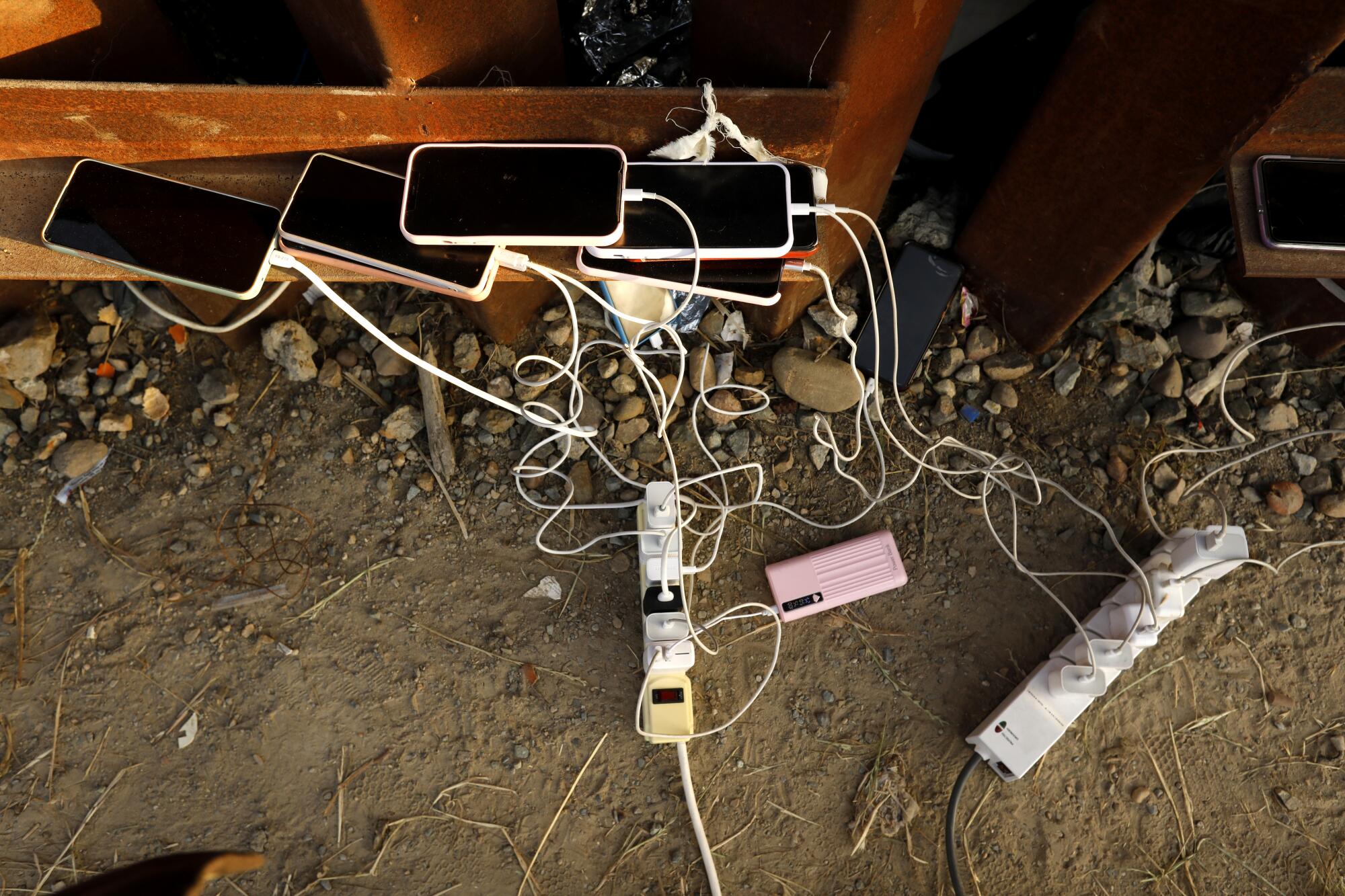
Back near the makeshift phone charging station, Rodriguez, the migrant from Colombia, was staring into the distance. The only thing she’d had to eat or drink for several hours was a bottle of water and a granola bar.
She scrolled through her Facebook app, where she had recently searched for the phrase, “End of Title 42 and the harsh immigration law.” One of the results that popped up was a post from an account with a profile picture of a smiling cat — location listed: Timbuktu — with a screed about U.S. and Mexico relations and a link to a YouTube video.
Rodriguez said she tries to seek out reliable sources, scouring for video clips from presidents or other officials, but it’s hard to do much without draining her battery, which she needs to send audio messages to her 11-year-old son, who is still in Colombia.
In her hometown — a prized location because of the gold in the hills — armed groups charge everyone extortion fees, she said, adding that, last year, a group of men kidnapped her and held her captive for four days. After a community leader helped broker her release, she and her son fled immediately to the capital.
“There,” she said, “your whole life is at war.”
The protest on Feb. 14 — when immigrants won’t show up to work or school or spend money — is meant to pressure Biden into prioritizing immigrants.
Sometimes, during her recent trek north and, again, several times while waiting at the border, she had opened up TikTok and searched for videos set to the song “Ilegal” by Grupo Recluta. It’s a ballad about a migrant’s journey north — about long hours in the desert, hunger pangs and tears, about sending money back home to the ranch where your parents live, about how, even though you’re no longer cold or hungry, you now hear loneliness when you call home.
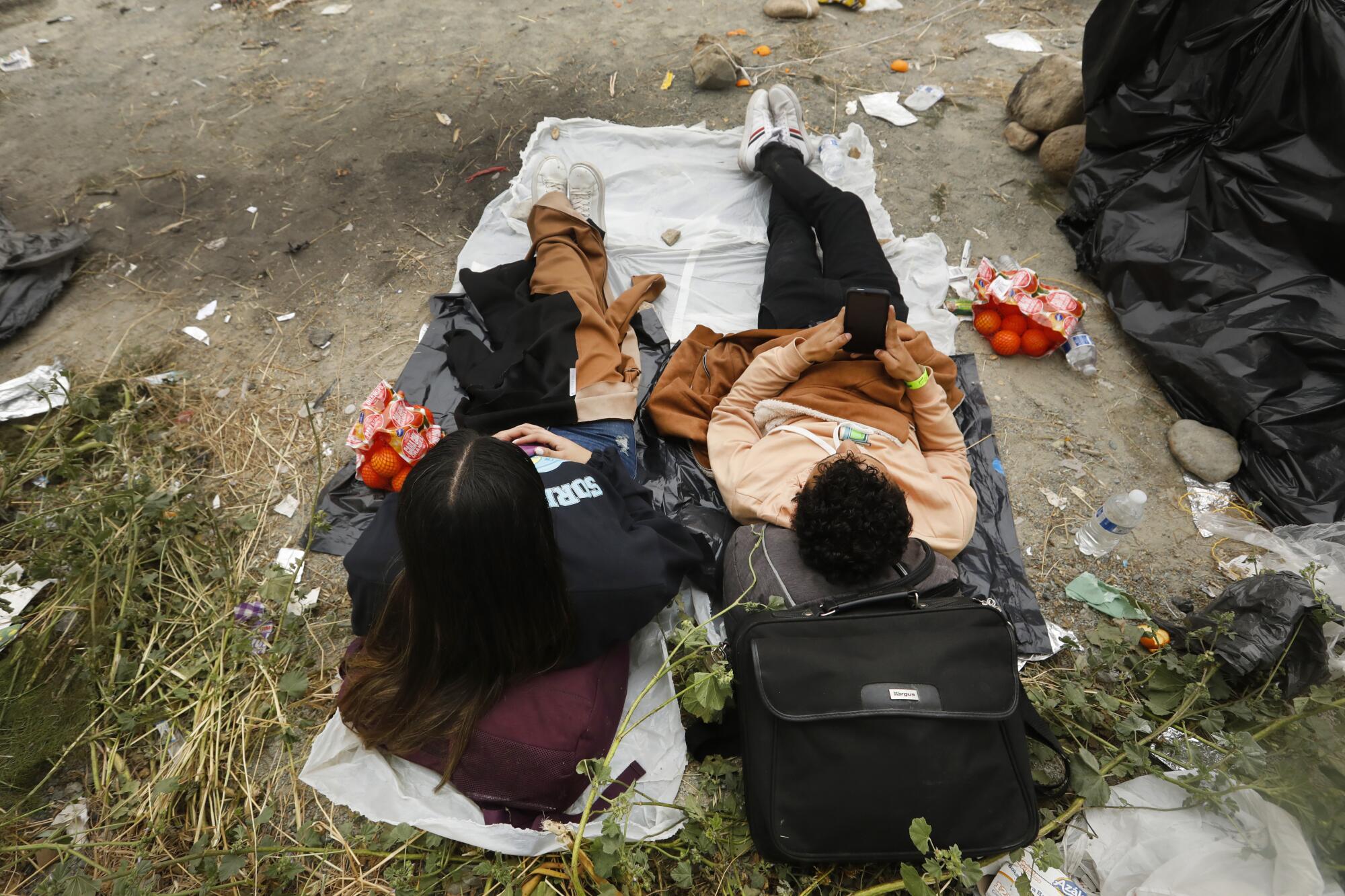
Migrants post TikToks to the song along with a mash-up of videos, often showing them walking in lines along rocky desert trails, in abandoned homes with smugglers and waiting huddled in Mylar blankets and then — in the end — clips of them reunited with family or sending remittances back home.
“I want that,” Rodriguez thinks, as she watches.
She lets her mind drift to an imaginary future — to the video clips she might record of herself at a job she enjoys or her son studying to become a veterinarian. Maybe one day, she tells herself, she, too, will look back and know this was worth it.
More to Read
Inside the business of entertainment
The Wide Shot brings you news, analysis and insights on everything from streaming wars to production — and what it all means for the future.
You may occasionally receive promotional content from the Los Angeles Times.
